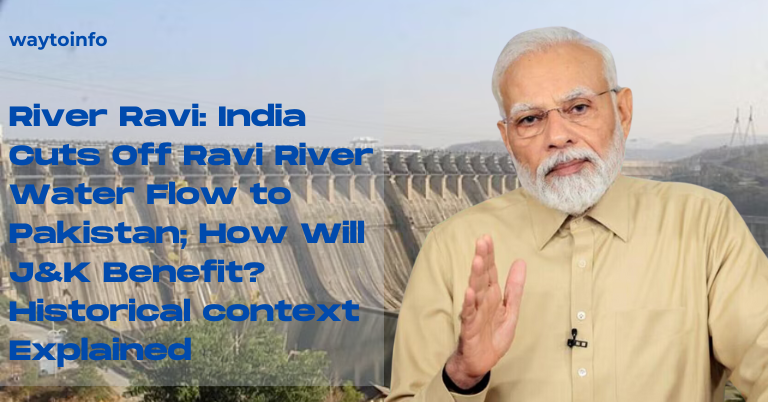River Ravi: Reports confirm that India has ceased the flow of water to Pakistan by completing the Shahpur Kandi Barrage on the River Ravi, indicating a significant shift in water allocation as of February 25. This decision is expected to benefit the Jammu and Kashmir region for agricultural purposes.
In What Way Will This Benefit J&K?
The region would now receive at least 1,150 cusecs of water previously assigned to Pakistan. The water is planned to be used for irrigation, helping more than 32,000 hectares of land in Kathua and Samba districts. The Shahpur Kandi Barrage is a dam on the Ravi River in the Pathankot district of Punjab, India.
By doing this, 20% of the hydel power generated electricity produced by dams will be available to Jammu & Kashmir. Additionally, the Punjab and Rajasthan regions will benefit from the water.
According to NDTV, the 55.5-meter-high Shahpur Kandi Dam is part of a multi-purpose river valley project that includes two hydroelectric power plants with a combined installed capacity of 206 megawatts. It is erected on the Ravi River, 11 kilometers downstream from the Ranjit Sagar Dam Project.
For more news updates follow: Way to News
The Indus Water Treaty
Signed in 1960 under World Bank supervision, the treaty between India and Pakistan facilitated the flow of a portion of the Ravi River’s water into Pakistan through the Lakhanpur dam. This treaty allows India to establish storage facilities on the western rivers, thereby bolstering its water management capacities.
As to the terms of the agreement, Pakistan is in charge of the Indus, Jhelum, and Chenab rivers, while India is granted sole sovereignty over the waters of the Sutlej, Ravi, and Beas rivers.
Shahpur Kandi Barrage
Former Prime Minister PV Narasimha Rao laid the foundation stone for the Shahpur Kandi Barrage project in 1995. However, it faced a delay of nearly four years due to a domestic dispute between Jammu and Kashmir and Punjab.
Shahpur Kandi was designated as a national project in 2008, however, work on it did not begin until 2013. The disagreements between Punjab and J&K caused the project to stop once further in 2014. After the Center finally served as a mediator between the two governments in 2018, the work was able to resume.
Prime Minister Narendra Modi emphasized India’s legitimate claim to the waters of the Sutlej, Beas, and Ravi rivers during a rally, giving the Shahpur Kandi Barrage project priority.
“Had Narendra Modi not become Prime Minister in 2014, the Shahpur-Kandi dam project, which had been stalled for 70 years, would not have resumed,” Jitendra Singh, Union Minister of State in the Prime Minister’s Office, said at a public meeting in Basohli, Kathua district, which is part of his Udhampur parliamentary constituency.
A task force was established to ensure that every drop of water from the rivers reaches the people of both Jammu and Kashmir and Punjab.
According to The Economic Times, around 2 million acre-feet of water from the Ravi river remained unutilised in Pakistan below Madhopur. Water projects such as the Bhakra Dam on the Sutlej, the Pong and Pandoh Dams on the Beas, and the Thein (Ranjit Sagar) Dam on the Ravi River, as well as the Beas-Sutlej link and the Indira Gandhi Nahar Project, have allowed India to use 95% of the water from eastern rivers.
The completion of the Shahpur Kandi Barrage will enable India to harness these water resources, thereby enhancing agricultural and economic growth in both states.

